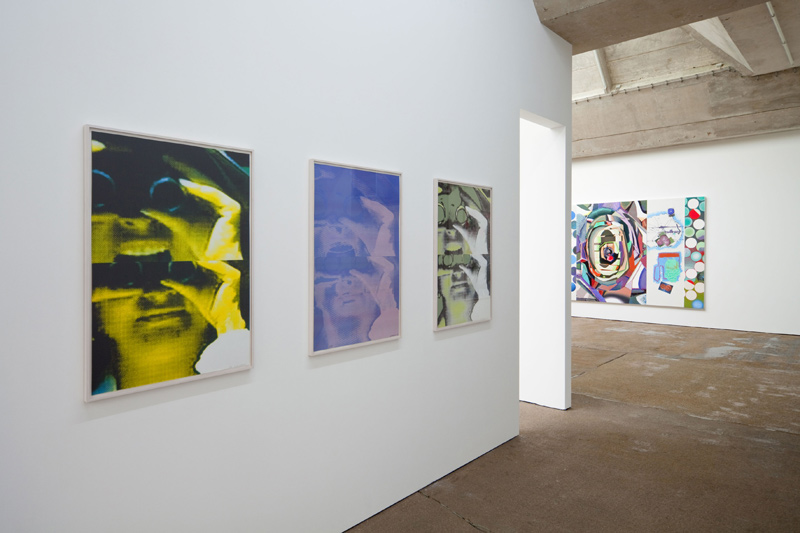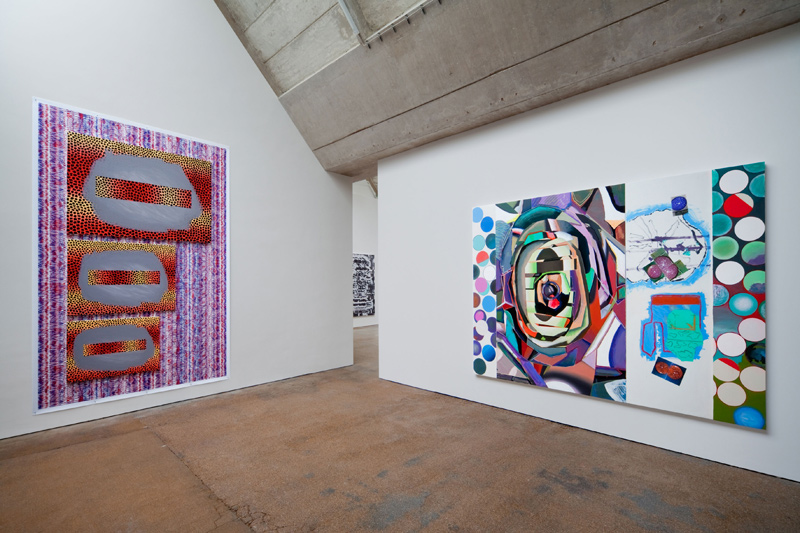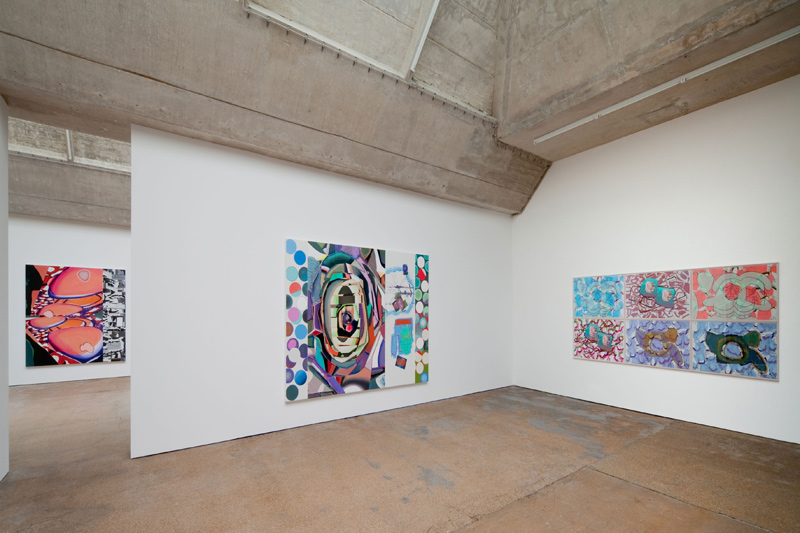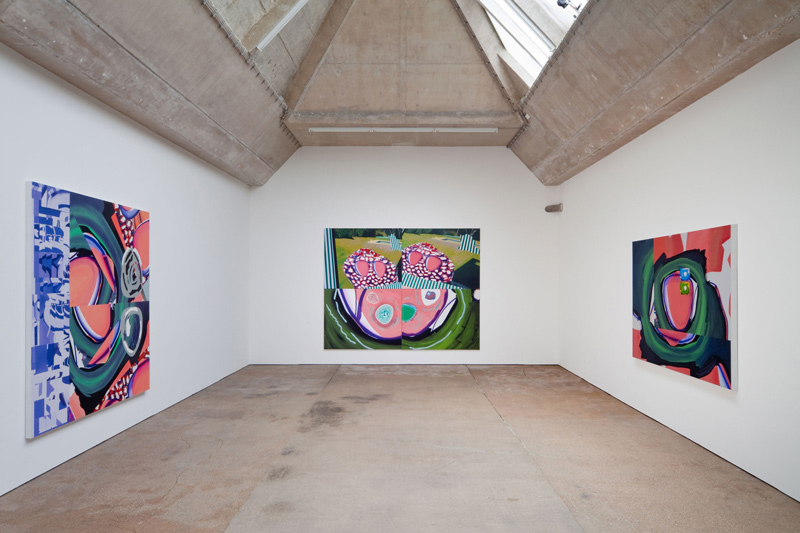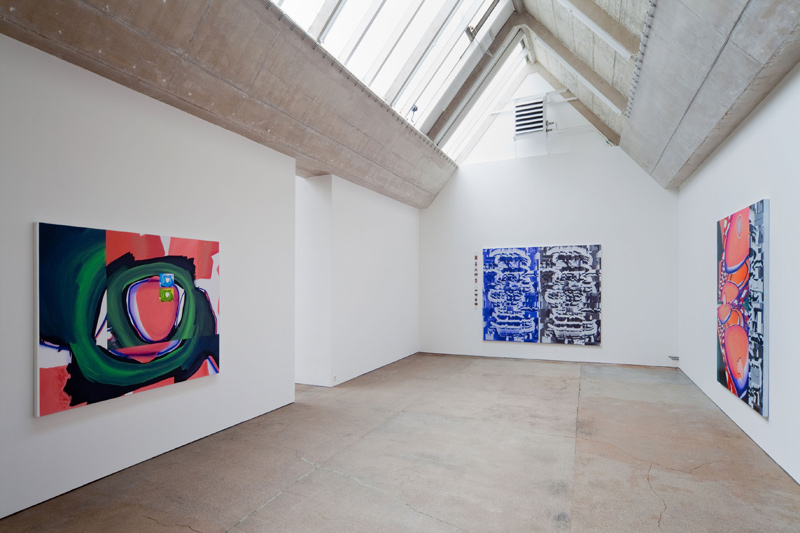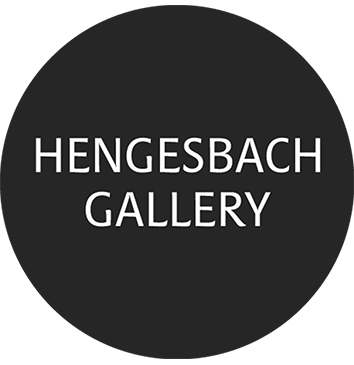Luis Gordillo
September 10 – October 30, 2010
Hengesbach Gallery is presenting current drawings, paintings, and monotypes by Luis Gordillo from September 10 to October 30, 2010. The 76-year-old Spanish artist lives and works in Madrid and was awarded the Velázquez Prize in 2007. That same year, his retrospective at the Reina Sofia was voted the best exhibition of the year in Spain. Gordillo’s works are fresh, provocative, and dynamic, placing his current oeuvre in close alignment with the positions of the young international art scene.
For the three exhibition spaces, Gordillo has created three distinct cycles of images. In the first, viewers are drawn into pictorial whirlpools or spinning geysers just before eruption. Organic cells, eyes, and fragments of landscape rotate within inextricable networks. The second cycle deals with gullets, entanglements, or crushings—with large image-mouths that engulf us, or with grinding machines and trick mirrors that leave behind only a shimmer. The third cycle features small lyrical miniatures, in which microworlds lapse into a nervous flicker.
Luis Gordillo has titled his Berlin exhibition Organic Logotypes. The term logotype originates from the field of printing, referring to the combination of letters cast on a single type block in lead type, which saved time during typesetting. Today, it is also used to describe the logos of companies and products. Logotype involves the formation of units that may not have individual meaning but contribute to an overall sense—thus it fluctuates between meaning and meaninglessness. In contrast, organic refers to biological processes of emergence and decay, to an efficacy that carries its own sense of self-perception. Gordillo’s works oscillate between these two poles.
From Luis Gordillo’s perspective, there is no longer a natural place for human beings—not even within images. People must content themselves with drifting along in the diverging multiplicity of things. They experience accelerations that can tear them apart or drive them toward crises, as the fragments they constantly produce have only limited durability. Gordillo makes these crises visible by fragmenting structures and constructing new images from pieces of his own destroyed works. Proliferating growth, destructive dissection, and self-observation within this turbulence have become consistent features of his art.
Through photography, he captures states of his images, freezes them, arranges them collage-like beside and atop one another, and reproduces these states in other scale dimensions. This process results in a continual reproduction and self-nesting of images. The fragments multiply and move toward their own semantic exhaustion. In this way, Gordillo’s artworks enact a perpetual re-visioning of their appearance. Only the artist’s brush serves as the glue that momentarily holds the fragments together.
As in the 1960s, Gordillo’s images convey a fluctuating mood between humor and deep seriousness. Comic elements, exaggerations, garish colors, and peculiar form constellations are integral parts of his work. At the same time, they also carry the weight and gravity of inner struggle—of surrendering to the image while building intense tensions and inner pictorial contrasts. Whereas his early works visually focused on the human face or body, today only eyes, grimaces, skulls, or torsos remain, intricately nested within his compositions.
It becomes unclear to the viewer whether it is the artist’s own subject that is disintegrating or whether Gordillo’s works articulate the dissolving identity of each individual within the hyper-complexity of the modern world. In this ambivalence between self-exposure and the articulation of the world’s fragmentation and inaccessibility, the artist finds kinship with the work of Martin Kippenberger. However, while Kippenberger expressed a cynical, distanced view of the world, Gordillo’s art, despite its skepticism, consistently reveals a curiosity for the layered facets of a world that keeps multiplying.
Installation Views
